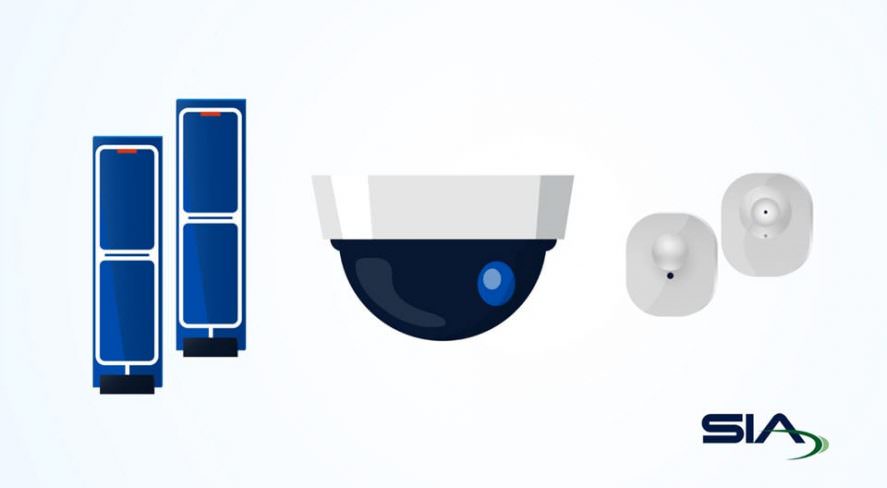The Hidden Value in Store Security Systems

Managers of a candy store in San Francisco were puzzled by the poor sales of a product they introduced in 2014. What explained the lack of interest from customers? Did the recipe need to be tweaked? Was the price point off?
As it turned out, the problem was not the quality of the product or the cost. The company discovered, through an innovative use of its video surveillance equipment, that it was a table.
A “heat mapping” study of customer foot traffic using video surveillance cameras revealed that fewer than 10 percent of shoppers were walking past the candy’s display. Video revealed that traffic was so low because a table appeared to be encouraging shoppers to take a different path. Simply moving the table more than tripled the percentage of shoppers who saw the new candy, The Los Angeles Times reported in a Sept. 23, 2016, article.
“We saw a dramatic increase in sales,” a company vice president told the Times. “It never had anything to do with the product or the price.”
Heat mapping is one of several ways that retail outlets are using security equipment to grow their businesses. Video cameras and other security devices are still a critical part of loss prevention, but new analytic technologies can also enhance sales and operational efficiency.
“Data-driven insights can create value across the full business,” retail consultant McKinsey & Company has written. “Cutting-edge retailers are using them to tailor assortments at the store level, to anticipate changes in customer traffic patterns, and to determine optimal distribution routes, inventory levels, and allocations, simultaneously enhancing the customer experience and improving unit economics.”
Table of Contents
ExpandHow to Use Retail Security Systems to Drive Revenues
A store’s video surveillance system can be used for more than catching thieves. With the application of video analytics, a feature available in many newer professional security cameras, stores are able perform heat mapping, people counting, queue management and other retail business intelligence functions. Here are a few of the things that can be done today:
Heat Mapping
As illustrated in the example of the new candy product launch, heat mapping can help to identify customer habits. The typical approach is to convert video from surveillance cameras into graphic images of “hot” and “cold” areas of customer flow. Retailers can then adjust store layouts to manage customer traffic or relocate promotions to take advantage of existing customer flow.
People Counting
People counting is another metric derived from data collected by security equipment, most often using video surveillance cameras. The technology is just what it sounds like: Analytics that recognize human forms calculate the number of people who pass by a given area. This can be used like heat mapping to identify the best way to position products in a store. Advanced technologies running on a store’s video surveillance systems offer the promise of demographic and, even, mood identification. Do middle-aged men, on average, appear to be interested in the display? Do younger women tend to be indifferent to it? Such information will soon be available. In addition, people counting can measure customer demand from day to day, or even hour to hour. This information can be used to calculate conversion percentages, gauge the success or failure of sales and promotions, and determine optimum staffing levels.
Vehicle Counting
Vehicle counting technology provides yet another way to measure customer activity, one that is especially useful in larger retail environments such as malls. Records of vehicle counts and movements can be used to improve the design and operations of parking lots and garages, getting people into stores more quickly. High-end retail establishments may even choose to use license plate recognition technology to alert them when “VIP” customers arrive.
Queue Management
Queue management, which also leverages a store’s security cameras, is basically people counting deployed at checkout areas. With constant, real-time monitoring of the number of people who are in the waiting lines at registers, a store can adjust staffing when needed, reducing customer frustration.
Dwell-Time Monitoring
Dwell-time monitoring can be a part of managing checkout lanes (often referred to as queue management). Measuring the total time for point-of-sale transactions can help to identify staff members who may need additional training. This metric can also be applied to other parts of the store to determine the level of interest in a display or product, as measured by the time shoppers spend in a given area.
How to Use Security Equipment to Control Costs
In addition to offering features that can be used to increase revenues, security systems can also be used to decrease costs.
Tracking Attendance
Access control systems can provide reliable, automated records of employee attendance by documenting when employees use their badges or credentials at an entry point. In larger facilities with multiple, controlled areas, these records can document an employee’s location throughout the workday. Video systems also provide information about employee performance. This can be a valuable management tool for supervisors who are off-site, have large staffs, or are otherwise unable to monitor subordinates in-person.
Reducing Heating & Cooling Costs
In warehouses and storage facilities, access control systems can be integrated with building management systems so that entrance and egress trigger automatic adjustments to HVAC, lighting and refrigeration levels, saving the company energy and money and advancing “green” initiatives.
Resolving Claims and Complaints
Finally, it is not uncommon, unfortunately, for stores to become involved in disputes with customers or employees. When this happens, a video record of an incident can be a decisive piece of evidence in cases involving customer complaints and workers’ compensation claims, especially if legal action results or is threatened. Audio recording greatly enhances the evidentiary value.
Spending on security equipment has long been viewed reluctantly, as a necessary expense to mitigate retail shrink. Now, though, security solutions have become an investment. Not only are they more effective than ever at managing risk, while also serving as a force multiplier for revenue-producing–and cost reducing–business operations.
